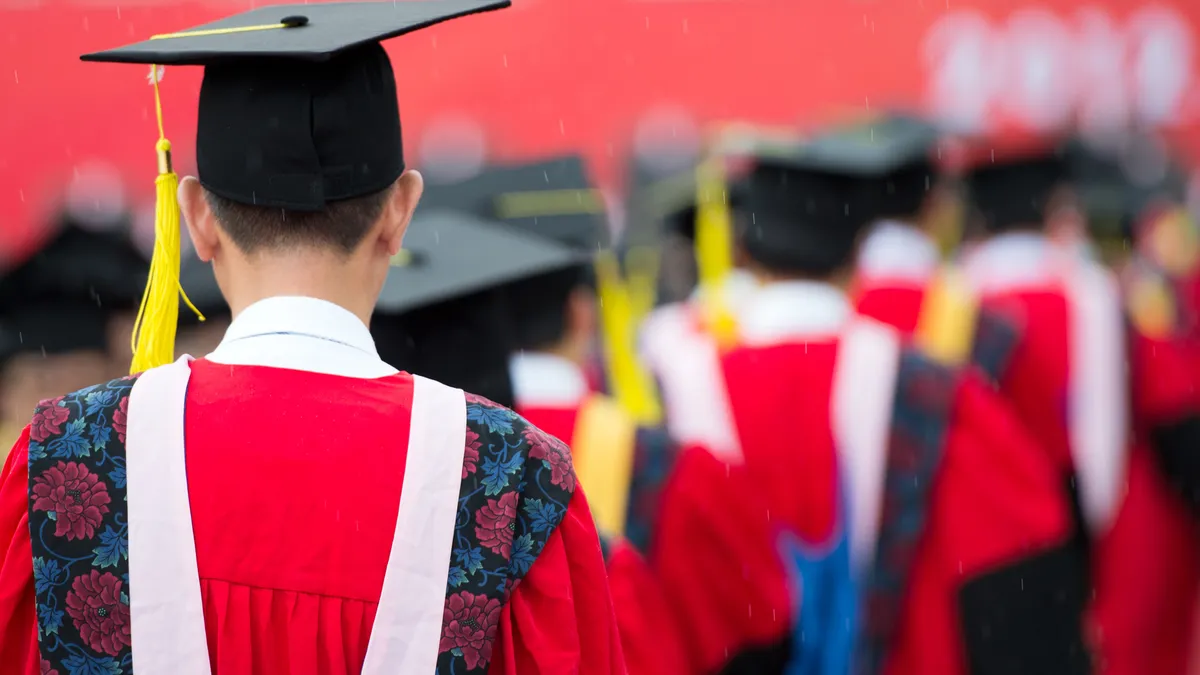Dive Brief:
- A Wall Street Journal investigation found hundreds of four-year colleges with abysmally low graduation and high student loan default rates still get a seal of approval from accreditors.
- The WSJ reports that accreditors effectively serve as consultants for colleges, helping them improve on their own goals, rather than as watchdogs protecting government investments or students.
- According to the analysis, the U.S. government paid out $16 billion in student aid during the 2013-14 school year to schools with graduation rates below 33%.
Dive Insight:
As college tuition prices continue to rise, the question of value in higher education is becoming a more pressing concern to families and government officials, who allocate taxpayer dollars to help students through their degrees. The WSJ reports that Kentucky State University graduates only 18% of students within six years, and 30% of students go into default on their loans within three years of beginning repayment. Colleges like Kentucky State, a historically black institution, say they enroll a more at-risk population of students who come from low-income backgrounds and poorly performing high schools. There is something to be said for access, but should students be allowed to take out tens of thousands of dollars in loans to attend a school they’re unlikely to graduate from, severely limiting its value? Would closing schools be better?













